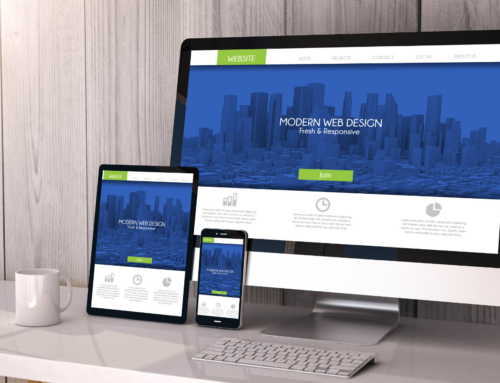Understanding User-Centered Design: Key Factors for Effective Web Applications
Are you curious about the secrets behind exceptional web application design? Crafting a successful web application involves more than aesthetics – creating an experience that captivates users and keeps them coming back. Various factors, from seamless navigation to responsive layouts, are pivotal in shaping effective web application design. We’ll explore the key considerations that influence the design of web applications, ensuring they not only catch the eye, but also deliver exceptional functionality and user satisfaction.
What is Web Application Design?
Web application design encompasses creating digital interfaces that users interact with through web browsers. It involves a web application’s visual and functional aspects. How users navigate, interact, and engage with its features and content. Effective web application design integrates aesthetics, usability, and functionality to provide a user-centered experience that meets and exceeds user expectations. We’ll delve into the crucial factors that shape the landscape of effective web application design, ensuring a harmonious blend of form and function.
1. User-Centered Design
Creating a web application that resonates with users begins with a user-centered design approach. This foundational principle involves delving deep into the mindset and needs of the target audience. By understanding users’ preferences, behaviors, and pain points, designers can craft an experience that truly speaks to them. Through methods like user research, personas, and user journey mapping, developers gain valuable insights that guide design decisions. This ensures that every element, from layout to functionality, aligns seamlessly with users’ expectations. A user-centered design approach enhances usability and forms the bedrock of an effective web application that leaves a lasting impact.
2. Functional and Intuitive Navigation: Guiding Users Seamlessly
Navigating a web application should be a breeze, not a puzzle. Functional and intuitive navigation is the compass that directs users through the digital landscape. When menus are well-organized, labels are clear, and links are strategically placed, users can effortlessly find what they seek. Breadcrumbs, search bars, and user-friendly sitemaps enhance the journey. Remember, a user who can explore without confusion is more likely to engage, ensuring your web application remains a destination of choice.
3. Responsive and Adaptive Design
Responsive design n is fundamental concept in modern web application development. It refers to creating a single application layout that adapts and responds to different screen sizes and devices. Whether users are accessing the application on a large desktop monitor, a tablet, or a tiny mobile phone screen, the layout and content adjust automatically to provide an optimal viewing experience.
n is fundamental concept in modern web application development. It refers to creating a single application layout that adapts and responds to different screen sizes and devices. Whether users are accessing the application on a large desktop monitor, a tablet, or a tiny mobile phone screen, the layout and content adjust automatically to provide an optimal viewing experience.
The responsive design achieves this flexibility through fluid grids, flexible images, and CSS media queries. Fluid grids ensure that elements within the layout resize proportionally while flexible images scale without losing their aspect ratio. CSS media queries allow developers to apply specific styles based on the user’s device characteristics, such as screen width or orientation.
4. Performance and Loading Speed
When it comes to effective web application design, several factors play a crucial role in ensuring a seamless user experience. One such factor is performance and loading speed. In today’s fast-paced digital landscape, users don’t have patience for slow-loading websites or applications. Slow performance can lead to high bounce rates and user frustration, ultimately affecting the success of your web application.
Optimizing performance involves various strategies, including efficient coding, optimized images, and minimizing HTTP requests. Additionally, leveraging content delivery networks (CDNs) and browser caching can significantly enhance loading speed. By prioritizing performance and loading speed during the design phase, you create a positive first impression, engage users, and increase the chances of retaining them. In this way, performance becomes a cornerstone of effective web application design, contributing to a successful and user-friendly online experience.
5. Visual Hierarchy and Content Presentation
Visual hierarchy encompasses the arrangement of design elements in a way that guides users’ attention naturally. The human eye is naturally drawn to certain elements before others. By capitalizing on this innate behavior, designers can ensure that users first notice and engage with the most important information.
Heading, subheadings, bullet points, and whitespace are not mere design elements; they empower designers to create a user-friendly content presentation. In a world flooded with information, readability is paramount. Headings and subheadings break down content into digestible chunks, making it easier for users to scan and comprehend information. Bullet points, on the other hand, condense complex details into concise formats, enhancing clarity. Whitespace, or negative space, provides breathing room between elements, preventing visual clutter and ensuring a relaxing viewing experience.
6. Accessibility and Inclusive Design
Effective web application design is a multi-faceted endeavor that requires careful consideration of various factors to ensure a seamless user experience. One of the key elements in this equation is accessibility and inclusive design.
Accessibility: A Priority, Not an Afterthought
Web accessibility involves creating web applications that can be used by people with disabilities, ensuring that they can perceive, understand, navigate, and interact with digital content. While accessibility is often associated with catering to individuals with visual impairments, it encompasses a much more comprehensive range of disabilities, including auditory, cognitive, and motor impairments. By making web applications accessible, developers ensure that everyone can benefit from their offerings, regardless of their abilities.
Inclusive Design: Bridging the Gap
Inclusive design goes hand in hand with accessibility. It involves designing web applications in a way that considers the needs of diverse users from the outset. Rather than retrofitting features to accommodate different users, inclusive design aims to build those features into the application’s core. This approach not only enhances usability for people with disabilities but also improves the overall user experience for all users.
7. Consistency in Design Elements
A successful web application involves a careful blend of creativity and strategy. Design elements play an important role in significantly influencing its effectiveness. Consistency ensures that users can navigate the application seamlessly as they encounter familiar patterns and interfaces throughout their journey.
Consistency in design elements like color schemes, typography, buttons, and navigation menus enhances user comfort and confidence, building trust and reinforcing brand identity. Inconsistent design can confuse users, disrupt flow, and erode trust. Therefore, designers should prioritize uniformity across all aspects of web application design to provide a positive and memorable experience.
8. Feedback and Interaction Design

Design elements play an important role in significantly influencing its effectiveness. Users’ experiences are shaped by how seamlessly they can navigate and engage with the application. This demands a user-centric approach, where designers analyze user behavior, preferences, and pain points to refine the design iteratively. Interaction design, focused on intuitive navigation and engaging user interfaces, requires a deep understanding of user expectations. Feedback and interaction design are fundamental factors that influence effective web application design. Users’ interactions with a web application are crucial for a positive experience.
Designers need to create interfaces that provide clear feedback to users when they perform actions, such as clicking a button or filling out a form. This feedback assures users that their actions are registered, which helps build trust and confidence in the application. Feedback loops in web application development help identify usability issues early, resulting in more user-friendly applications. Strategic interaction design principles balance functionality and satisfaction, enhancing overall user experience.
9. Security and Trust
In designing web applications, several critical factors play a pivotal role in ensuring their effectiveness. One of the foremost considerations is security and trust. Users need to feel confident that their sensitive information is safeguarded against potential threats. A well-designed web application employs robust security measures, such as encryption protocols and authentication mechanisms, to protect user data from unauthorized access.
Trust is crucial for user engagement in web applications. Transparent privacy policies, clear data usage communication, and a seamless user experience contribute to building trust. Web application designers can establish a strong foundation for user engagement and long-term success.
10. Testing and Iteration
A successful web application involves various factors, with testing and iteration emerging as crucial components. Rigorous testing ensures the application functions seamlessly across different devices, browsers, and screen sizes. Designers identify and rectify usability issues, bugs, and performance bottlenecks through testing.
Iteration is a process that designers use to refine and enhance user experience, identifying pain points and improvement areas. It also allows for the incorporation of new features and adjustments to align with changing user needs and technological advancements.
Apply Web Application Design Techniques Going Forward
Effective web application design techniques are crucial for success in the evolving digital landscape. Ensure user-centric, responsive, and secure applications. Continuously gather feedback, iterate designs, and stay updated with industry trends. Consistent design principles enhance user satisfaction and keep web applications relevant in the online world. Developers can propel their applications towards a brighter, more user-friendly future.
Web application design success relies on a balance between aesthetics, functionality, and usability. Designers must balance these aspects to create user-centric experiences. To ensure responsiveness and security, designers must adapt to design trends and user preferences. They must gather feedback, iterate designs, and stay updated with industry trends to achieve excellence in the digital landscape.
Consistently applying design techniques can create web applications that exceed user expectations, enhance satisfaction, and remain relevant in the ever-changing online world. By embracing holistic design principles, web applications can be crafted into digital environments that meet and exceed user expectations.





